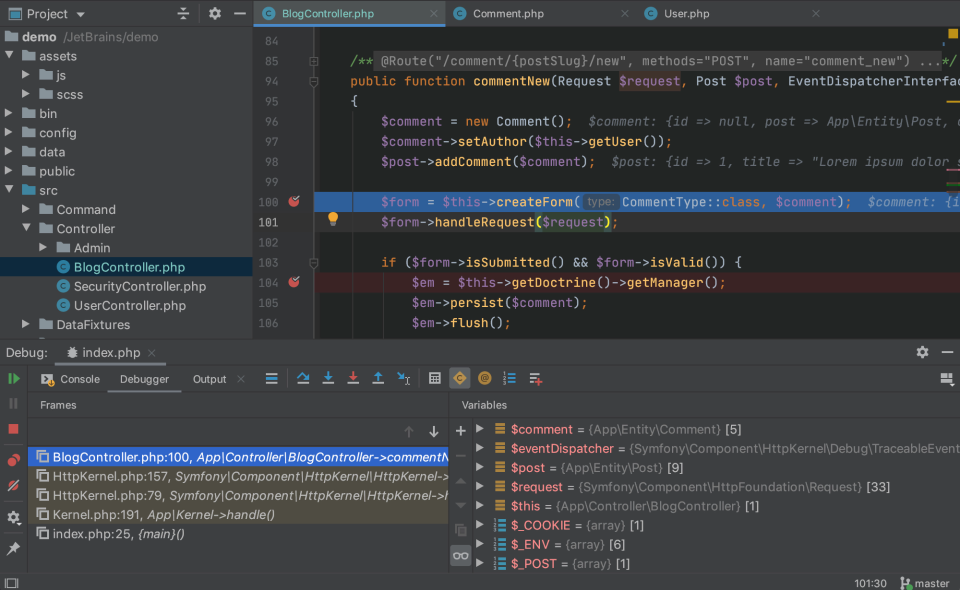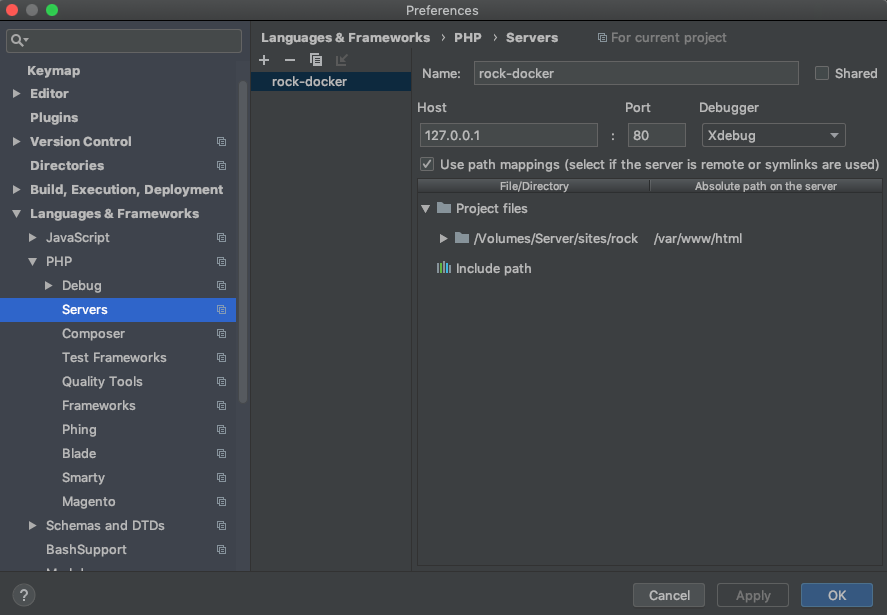
- Phpstorm 2019 debug php application in docker container how to#
- Phpstorm 2019 debug php application in docker container install#
- Phpstorm 2019 debug php application in docker container manual#
- Phpstorm 2019 debug php application in docker container software#
Introducing Continuous Delivery means to automate the delivery process and to release our application frequently. Tutorial: Continuous Delivery with Docker and Jenkins We’ll implement this solution with Maven and Docker. At the end, every build will produce an artifact which is potentially shippable.
Phpstorm 2019 debug php application in docker container manual#
This post shows how we can leverage the Git commit hash to get rid of manual workflows and automate the Continuous Delivery pipeline. The classical versioning approach (“8.2.0”) and release workflow is inappropriate, because it can’t be automated properly.

Version Numbers for Continuous Delivery with Maven and Dockerĭealing with version numbers is an important challenge on the way to Continuous Delivery. Let’s consider some solutions for these issues. This increases the maintenance effort and can slow down the development. Another pain point are the various tools (JDK, Maven, node, gulp etc.) that have to be installed and maintained on all Jenkins nodes. This makes it hard to set up a new job correctly or to track configuration changes. The job configuration is stored somewhere else but not in the version control system. Improving your Continuous Integration Setup with Docker and GitLab-CIĪ typical Jenkins 1.0 setup for Continuous Integration (CI) comes with some drawbacks. In this brief post, I show you how I achieved this. That’s why I needed a local SMTP server for testing and integrate it into my current Docker composition. But that was not enough because my PHP application also sends mails and I wanted to test this feature locally as well. A Test Mail Server for a PHP Docker Containerįor a small PHP project, I created a Docker container with an Apache and PHP in order to ease local development and setup.
Phpstorm 2019 debug php application in docker container how to#
But how can we debug the PHP code running in the container? In this post, I show you how to configure Xdebug in a PHP container and configure IntelliJ IDEA Ultimate or PhpStorm for remote debugging. Running PHP and an Apache in a Docker container is very handy for local development.

Debugging within a PHP Docker Container using IDEA/PhpStorm and Xdebug In this post, I explain my reservations and point out Docker as an alternative which can be easily used with TestContainers or within the Gradle/Maven build. However, this comfort comes with severe drawbacks. Just start your tests and the H2 database will be up and running. You can test your code without having to worry about installing and managing a dedicated database server up front. How cool would it be, if we just have to call docker-compose up and the whole environment is automatically created locally containing nice dummy data? Don't use In-Memory Databases (H2, Fongo) for TestsĪt a first glance, in-memory databases (like H2 or Fongo) look like a good idea. Moreover, the application still doesn’t work as it requires an external service… The process of setting up a local development environment is often a journey of pain with many manual actions and implicit knowledge. After installing and starting a database manually you look at an empty application. Imagine you clone a git repo and try to start its application in your IDE. Smooth Local Development with Docker-Compose, Seeding, Stubs, and Faker That’s why I like to share my findings here. Figuring out which libraries have to be installed up front took me some time.

But running the SVG converter script within a lightweight Alpine Docker container turned out to be problematic. I just wanted to convert SVG to PNG files with Python and the library CairoSVG.
Phpstorm 2019 debug php application in docker container install#
Install Cairo and CairoSVG on an Alpine Docker Image For instance, we could reduce the effective size of new artifacts from 75 MB to only one MB! And the best is that there is a plugin for Maven and Gradle handling everything for us.

Fortunately, we can leverage Docker’s image layering and registry caching to create incremental builds and very small artifacts. Putting a fat jar into a Docker container is a waste of storage, bandwidth and time.
Phpstorm 2019 debug php application in docker container software#
Java Ecosystem, Kotlin, Engineering Management, Sociology of Software Development Docker Don't Put Fat Jars in Docker Images


 0 kommentar(er)
0 kommentar(er)
